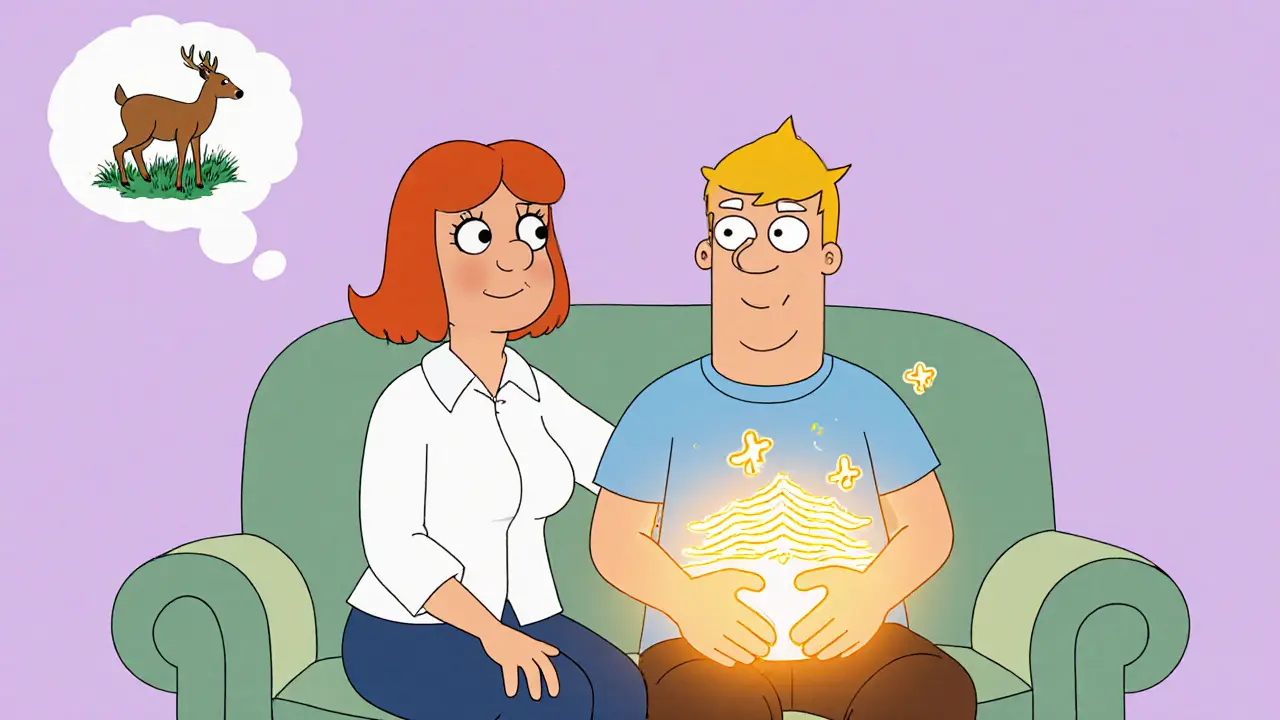Tělové přístupy v psychoterapii: Jak tělo pomáhá zvládat úzkost, traumata a poruchy příjmu potravy
When you feel anxious, your body doesn’t just react—it remembers. tělové přístupy, terapeutické metody, které pracují s tělem jako zdrojem emocí a paměti, nejen s myšlenkami. Also known as somatická terapie, it recognizes that trauma, anxiety, and disordered eating aren’t just in your head—they live in your shoulders, your stomach, your clenched jaw. If you’ve ever felt like no matter how much you talk, something inside you still feels stuck, it might not be because you’re not trying hard enough. It might be because your nervous system never got the message that you’re safe now.
Many of the posts here connect directly to this idea. In articles about poruchy příjmu potravy, psychologické poruchy, kde tělo a jídlo se stávají prostředky kontroly a trestu, you’ll find that recovery isn’t just about eating regular meals—it’s about learning to feel hunger again, to tolerate fullness, to stop seeing your body as an enemy. In trauma terapie, přístup, který pracuje s tělesnými reakcemi na minulé šokující události, jako je zadržování dechu, náhlé bolesti nebo ztuhlé svaly, therapists don’t just ask, "What happened?" They ask, "Where do you feel it in your body now?" That shift—from thinking to sensing—is what makes these approaches so powerful for people who feel disconnected from themselves.
You won’t find magic here. No quick fixes. But you will find real methods: grounding techniques before EMDR, breathing exercises that calm panic attacks, body scans that help you reconnect after years of ignoring your physical self. These aren’t just "relaxation tips"—they’re tools to rewire how your nervous system responds to stress. And they work best when combined with talk therapy, not instead of it.
These approaches matter because traditional talk therapy sometimes leaves people feeling like they’re stuck in their heads. But if your trauma lives in your gut, if your anxiety tightens your chest, if your eating disorder whispers in your bones—you need more than words. You need to feel safe in your own skin again. That’s what tělové přístupy offer: a way back to yourself, one breath, one sensation, one moment at a time.
Below, you’ll find practical guides on how these methods show up in real therapy—whether you’re recovering from an eating disorder, healing from trauma, or just trying to feel less wired all the time. No theory without practice. Just clear steps, real examples, and what actually helps when you’re sitting in your therapist’s office—or on your living room floor—trying to breathe again.
